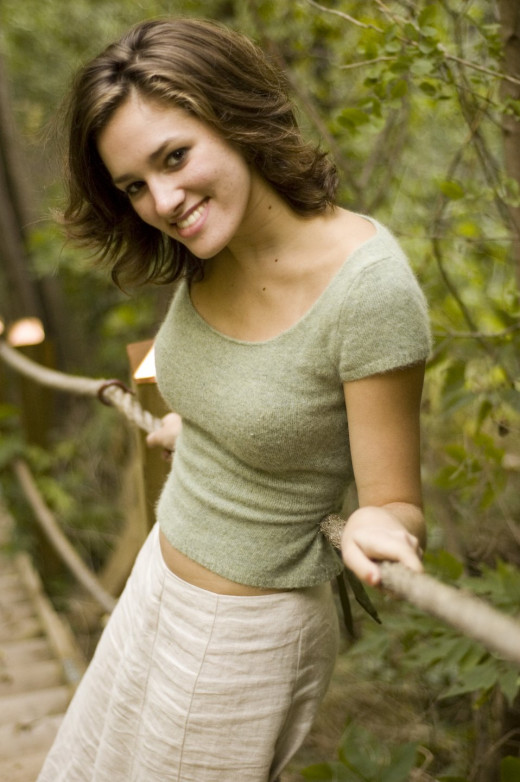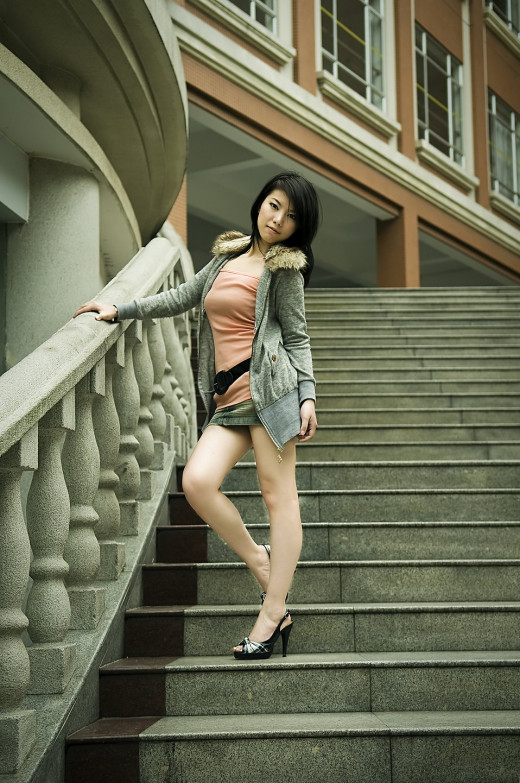How to Pose Your Models
Eye level

Slightly lower than eye level

When you work with non-professional models the photographer has to be in control and guide the models in order to obtain the best poses and to also to enhance their looks so that they can show up in nice positions that enhance their body persona.
This in itself can often be the most challenging aspect of a photo shoot. Regardless of how the setup and the general scenery is arranged if the models do not offer a good view that fits the theme then the photos lose a bit of interest and appeal.
Before you start working with others who are not familiar with the best poses or how photography shows people it is a good idea to look at various sample photographs that feature people in similar situations.
You can often get good tips by simply looking at the work of other more seasoned photographers.
Something else to consider is to look at how the photographer sets himself up to maximize the angles and use the best perspectives to get the best results.
Slightly higher angle

Eye level

When you get yourself at a slightly higher angle than the model your shots will tend to have a slimming effect on how the model is viewed or perceived.
Positioning yourself and your camera slightly higher than the subject’s eyes most often produces a more flattering image. It generally makes the subject look leaner.
However be careful to not position yourself so high that the subject is seen as looking strange and which may also appear to be in an uncomfortable position.
Eye level is usually the bets technique to get the best pictures but depending on how the model is built you might consider other angles.
Use your camera's viewfinder to judge how close to eye level you are and if you are shorter than your model perhaps using a small step ladder to get a bit higher that your model's eyes.
Very low angle have the opposite effect than a high angle and the model may show up as being bulkier that she or he generally is.
However low angles tend to build the persona of the model and is often used to create an illusion of importance and authority.
Most corporate photographs are usually done this way for this same effect.
For women having them slightly place more weight on the back feet tends to give them a more pleasing appeal which is more flattering the if she were standing with their weight distributed evenly among her feet.
For men the same holds true when they place their weight evenly on both feet. For a more masculine view have them slightly lean forward and place more weight on a front facing foot.
Couples should use the same approach ; slightly back leaning for the lady and slightly front leaning for the gentlemen works better that if they are standing in a full frontal pose.
Lower than eye level

Think these tips can enhance your shots?
Males always look better at a slight angle

Too high but can make for an intriguing view

Pay attention to the hands. Having the ladies place on hand on their waist and slightly tilt their head backwards presents a more sensual more feminine view.
For a gentleman placing one hand as if holding the belt buckle or a hand partially inside a jeans pocket does the same for showing his masculinity.
Like for all portraits, at least in my case, it is better to use a large aperture or f-stop to blur the background and avoid distracting elements.
Use a diffused light source like a cloudy sky or soft box to create a softer light and prevent harsh shadows.
Low to ground

High angle

- Tyra Banks's Modeling Tips - Fiercely Real Model Contest
There's no one better than Tyra to give excellent modeling tips and advice to those who dream of gracing the covers of magazines or strutting their stuff on the catwalks of high fashion. To help you with your entry to Tyra Banks's Fiercely Real Model
© 2015 Luis E Gonzalez









